LCI city plans to be unveiled —
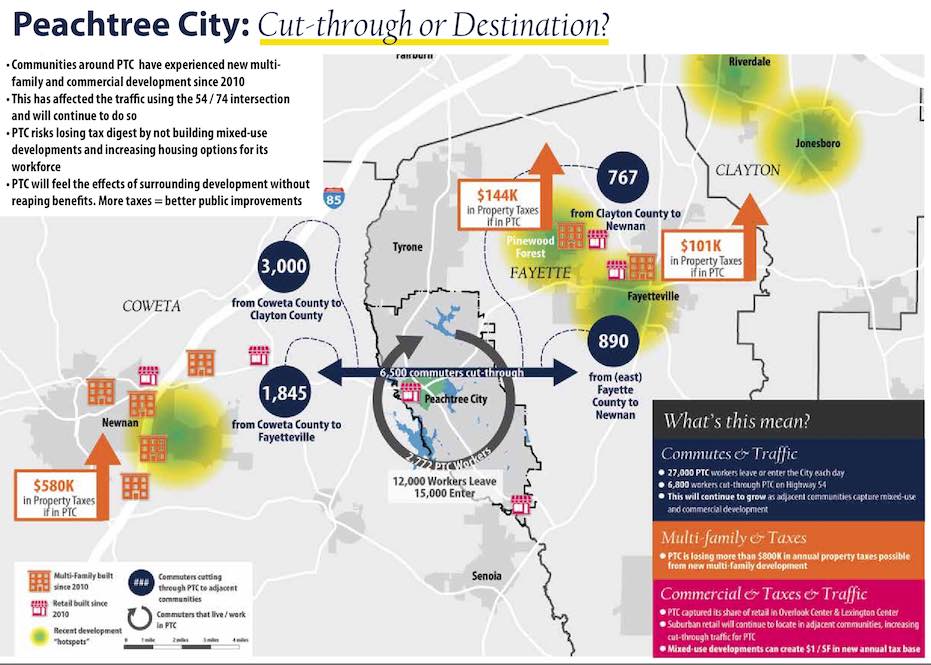
What Mayor Vanessa Fleisch has called “a roadmap for the future of Peachtree City” will be unveiled next Tuesday evening at the Kedron Fieldhouse.
That’s when the results of a $160,000 Livable Centers Initiative study will get a public airing at a special City Council workshop in the fieldhouse.
3 Options
Here’s the spoiler: With noticeable disappointment, the study has “recalibrated” after hearing from city residents and has come up with three options, one of which is “do nothing.”
Option 1 is to redevelop Westpark and part of Huddleston Road and to build “paths around City Hall.”
Option 2 is “some redevelopment at Westpark, Huddleston, City Hall.”
Among the proposals put forward by the draft study are “new streetscape” designs for Huddleston Road, Wilowbend Road and Commerce Drive through Westpark, plus some new streets “for better connectivity.”
The streetscape goals are to slow down car traffic, accommodate pedestrians, golf cart users and cyclists, to provide “usable public space,” and to “create dynamic ‘Main Street’ environments in key nodes.” For example, the Huddleston Road redesign with an 80-foot right of way would introduce four lanes of traffic, a cart path alongside the road and sidewalks along both sides, according to the slide presentation.
In both Options 1 and 2, the Willowbend streetscape would be improved as noted above, Drake Field is preserved and improved, existing City Hall is renovated or redeveloped, and existing green spaces and parks are connected by paths.
PTC’s “paradoxical” response
The disappointment? Here’s the quote from the LCI draft study: ”While attracting high paying jobs / corporate office users is a strong desire among local residents and officials, there are demographic and locational challenges. Paradoxically, much of the city remains suspicious of the density & housing types necessary to attract the worker base that would make the area more appealing to employers.”

Since the LCI model could be seen as delivering one pre-packaged solution for whatever problem a community might have, the process begs some questions:
1. For a planned community of villages, does LCI have any solutions beyond “create an urban-like core for supposedly play-live-walk-apartment-centric millennials”?
2. Since the full-blown LCI model makes some future projections about what will happen to the community if it embraces the “make-millennials-happy” model, does any of that $160,000 study have anything based on research to say about what happens in the “do-nothing” and hybrid models you propose?
The sub-theme of the “recalibrated” study is “Peachtree City: Cut-through or Destination.”
The draft study has a slide titled “What we’re hearing so far…”
• “Residents are hesitant about change.”
• “Residents are happy with PTC the way it is.”
• “Concerns about how any development affects traffic at 54/74.”
• “Concerns about the online engagement tools.” That means the study survey itself.
The slide continues, “We’re re-calibrating”:
• “Offering a no-build scenario for each site.”
• “Providing more background information on how housing, transportation, economic development are all connected at the local and regional levels.”
• “Offering the same activities at the Fireworks as online (on paper).”
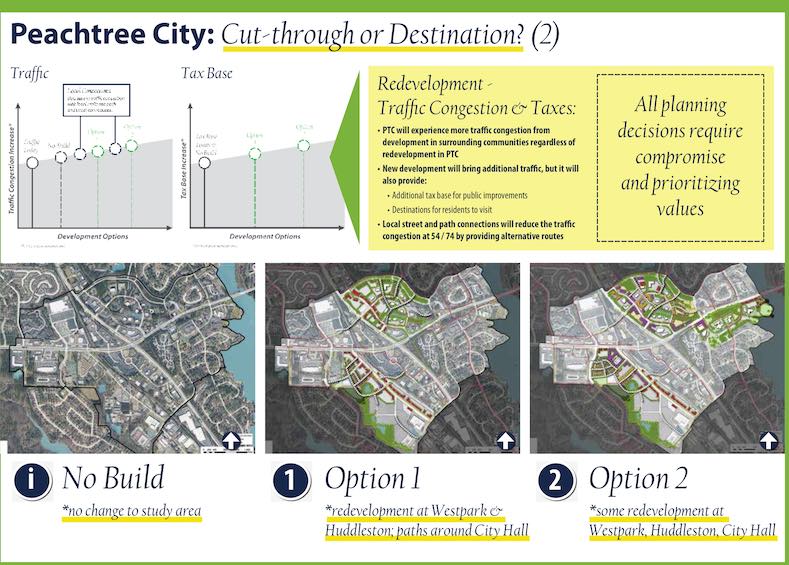
City government can drive change
The LCI draft study says the city government itself can take the reins of redevelopment and do some things itself.
From the draft study by Noell Consulting Group:
“Opportunity — The city can leverage several city own[ed] sites within the study area to create catalytic development opportunities while leveraging the existing strengths within the study area (retail, cart paths, & lake frontage) with sale proceeds providing cash flow to the city for further opportunities.
“By putting the proper land planning in place, these developments could help create town green / heart of the community which can attract diverse household types and, long term, corporate office users.
“The city can leverage tools such as preemptively rezoning land for appropriate density / uses and create public / private partnerships to encourage quality redevelopment.”
In other words, even if city residents are hesitant, the city government can do a lot on its own with its own property toward creating what the LCI considers the ideal: a walk-live-entertain city center.
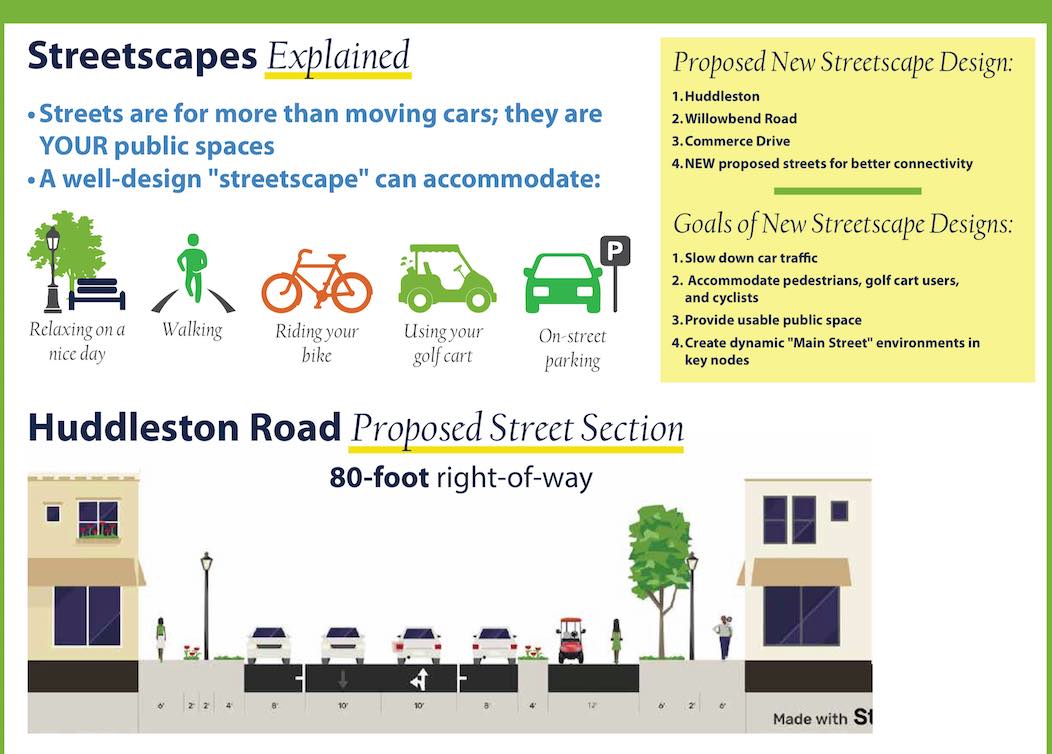
Mayor: “Stuck in our ways”
Mayor Fleisch has been clear about her notion of what should happen next. Here’s our story from late August about that:
=============================
The word to remember is “redevelopment” — Peachtree City Mayor Vanessa Fleisch was signaling the citizenry at the August City Council meeting that change is coming to the city, presaged by an ongoing study by the Atlanta Regional Commission’s Living Centers Initiative that focuses on what happens next in Peachtree City.
The average age of a home in Peachtree City is 30 years, Fleisch said, and even so, property values continue to go up. “That’s pretty impressive,” she said.
She contended that to keep that trend going, “we must be reinvesting in the city.”
She noted that the sheer amount of cardboard boxes from Amazon packages now showing up in the city’s recycling containers demonstrates how commerce has fundamentally changed.
“You shopping habits are changing,” Fleisch said. “If you are shopping online, what does that do to the local establishments (like Steinmart)?” Her point was that the core concept of Peachtree City envisioned multiple retail shopping centers that formed the city villages’ centers.
When retail declines as dramatically as it has in the past few years — punctuated by the Covid-19 pandemic and mandated business shutdowns — retail centers as village centers are in danger of not having enough customers to stay in business. That means empty, aging centers at the heart of the city’s five residential villages.
The anticipated solution is what the council wanted with Aberdeen Center — a new city center, with live-work buildings and maybe some high density residential within walking distance of a new shopping and entertainment area.
That deal fell through, but the idea is likely to come back alive when the survey is compiled and the LCI study is presented to the council, later this year.
Instead of “being stuck in our ways,” Fleisch said, “it’s better to have a roadmap for the future of Peachtree City.”
===============================
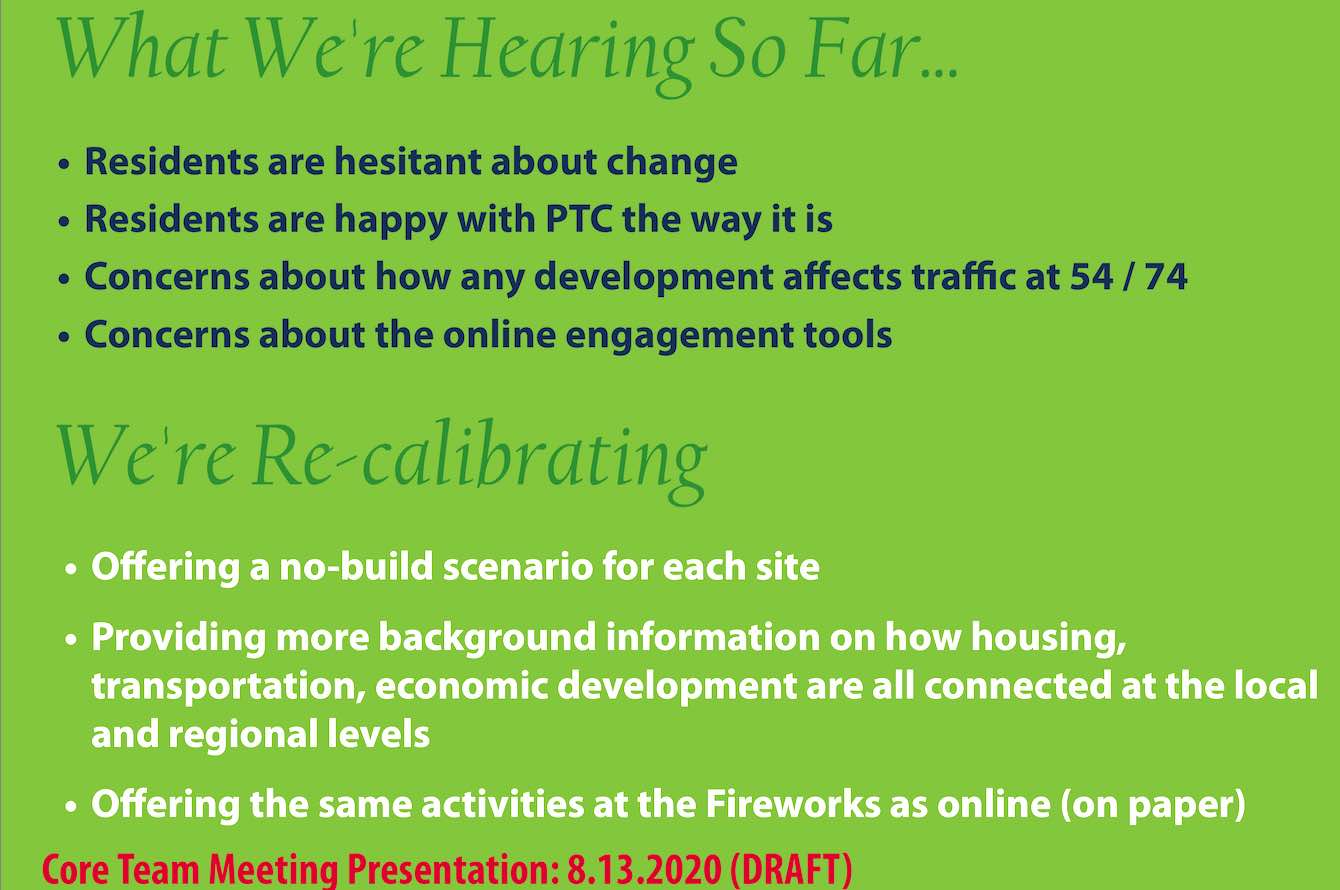
LCI: PTC needs better housing choices
The LCI draft study is critical of the city’s housing mix:
“One of the challenges in attracting younger households is limited housing types within Peachtree City.
“• Only 25% of housing within Peachtree City is renter occupied
“• This shows an imbalance with national and regional levels and goes against broader demographic trends
“• Of the renter occupied housing in Peachtree City, more than half is in the form of single-family homes
“• Roughly 1,450 apartment units in Peachtree City, average age built is 1990, & newest product is 19 years old. Not attractive to young professional households
“• Young professional households attract employers and retailers.”
And the study area itself — the very center of Peachtree City — receives study criticism:
“Challenges — The study area is bisected by two major road corridors, with significant traffic congestion, (54, 74) and an active rail line that break up, and limit, connectivity. Additionally, much of the study area is not ready for redevelopment with the city, and local area, lacking a central gathering space / town green with portions of the area lacking sewer connections, limiting development opportunities.”
The always thorny 54-74 problem
The draft study has some ideas about “How can we reduce traffic on Highway 74?”
“• Increase the percentage of Peachtree City residents that live/work/play in Peachtree City
“• As upcoming slides will show, Peachtree City has witnessed its fair share of office and retail development. Although, these have almost all been auto centric.
“• Further effort will need to be made to create more walkable places with a mix of uses
“• Diversify the housing stock in Peachtree City to allow more households the ability to live in Peachtree City and reduce the amount of cut through or outbound commuters
“• Zero new MF [multi-family — apartment] rental product in past decade, with over $800k in potential annual tax base lost out on
“• For-sale home prices that are over 40% greater than surrounding areas in part due to a lack of smaller home types – condos, townhomes, etc
“• Create alternative commuting routes”
What LCI believes must happen
The draft study is specific about what LCI folks believe must happen in Peachtree City:
“• New offices — Will need to provide walkable mixed-use environments and more diversified housing stock (rentals and homes under $500k) in order to continue being competitive going forward
“• Other than typical national chain retail, most retail and office tenants today are looking for experiential, walkable, mixed-use formats
“• These mixed-use environments nationally average 20-30% premiums over standard single use, auto centric models
“• These new mixed-use commercial spaces will create approximately $1/SF in new annual tax base”
The LCI findings will be presented during a called City Council workshop meeting Oct. 13 at the Kedron Fieldhouse at 6:30 p.m. The public is invited, but social distancing will be observed.
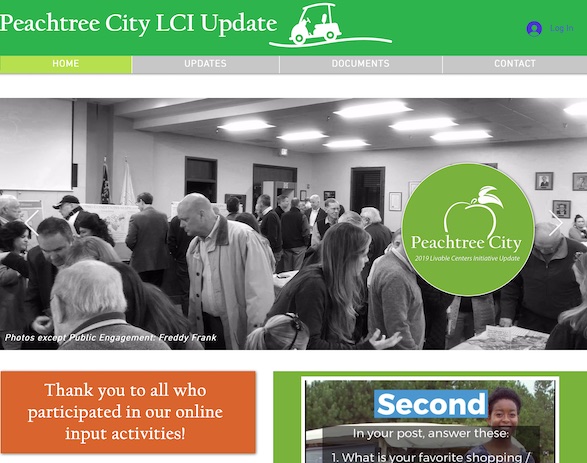

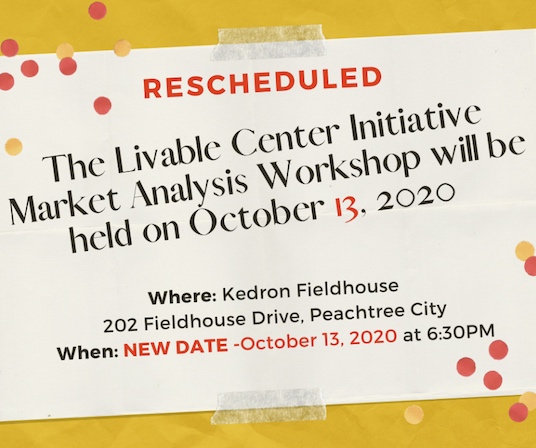





PTC has and will continue to be a move up community. My family, like many young families we know moved to Coweta in our 20’s and then to Peachtree City in our late 30’s. We did so for better schools and a better quality of life. Many wealthier families are moving from Henry to PTC for these same reasons. If millennials want more affordable options, they can move to neighboring areas. My neighborhood has homes that are $500k+ and all the new families are millennials. Low interest rates (and in true millennial fashion) a stipend form mom and dad help. Also, millennials are just now hitting their late 30’s and are starting to have school aged children. They are discovering that private school tuition, cost of living, and increasing crime make urban areas a tougher option for raising families.
Also, this study was done primarily before COVID19. Now younger professionals have options to work from home or virtually. Is that a trend or is it permanent? That’s yet to be determined, but this could shape communities permanently. If so, commute times/rail options become less important. Finally, new apartments and high density developments are a recipe for disaster. Why not replace or upgrade current apartments or create these livable areas there, and keep multifamily housing net neutral.
Just to be absolutely clear the Oct 13th presentation is for the Study Team to present their Market Analysis. Unfortunately it is not a Public Hearing open for comments. The meeting that most should attend is the one on Oct 22nd. At that meeting the entire Study plan will be presented and everyone will be able to see the entire plan with all the options and analysis.
If you can only make one of these two meeting make sure you come to the Oct 22nd meeting.
If the conclusion of the 2 meetings is that the study was misdirected somehow and got off the rails of reality – ignoring that we are a successful, already developed planned community looking for ideas for spot zoning or land use and we are done with this “urban planner” and move on to the paradox list (which was the best and most accurate thing in the study) – all would be fine.
Then, taking the next most obvious step, next time Atlanta Regional Commission wants to get its hooks into PTC we should politely tell them no thank you – we are fine. And to those (are you listening Henry?) who want to pursue the Modernize for Millennials program, simply give them directions to Trilith – formerly Pinewood Forrest (yes 2 r’s just like Nathan Bedford Forrest and Forrest Gump – seriously that’s how they spelled it at first).
Simply put – Trilith is a place for young workers in PTC to live. New relocating business or existing business – it is 10 minutes away and everything the young workers seem to want.
Trilith is a mini-city for millennials, built and designed by millennials and it will be interesting to observe and learn from them. Best of all, we can do all this without the internal strife and stress that comes with change in PTC. The dreaded density that old-timers here fear so much is on full display at Trilith for almost a year and not one murder or rape or home invasion has been reported. Wow!
Of course Trilith’s future is pretty clear since it is a one industry town, sort of like a town with cotton mills or coal mines. No one will publicly admit that big budget movies with star salaries at the obscene level that are shown in expensive theaters (unsafe during COVID) are endangered, but they are. If the next 20years have technology advances like the last 20, you’ll be able to make your own movies and distribute them – all using just your phone. Seems unbelievable, doesn’t it?
Lots of young families have moved into my $600K neighborhood. They are great people with kids. Why exactly do we need to pander to millennial singles or DINK’s?
Was your first house after adjusting for inflation 600k? PTC lacks starter homes.
Why would PTC want to devolve from a very nice, clean town?
It’s evolving, have you ever been to downtown Savannah? That’s the goal with this project.
Yes Henry you are right. Changing PTC into downtown Savannah is the goal with this project.
Since most of us – maybe all of us decided to live here instead of Savannah, it might show you we want exactly what we have instead of what some dopey consultant wants us to have.
Go away. Move to Savannah. Take the consultant with you.
Henry There are starter homes in PTC, Glenloch, Bedford Forrest, Wynnemeade, Foreston, Braelinn Green, and many other neighborhoods with homes under 300k but alot of the younger folks want new and shiny. There are currently 19 homes for sale under 300k and one under 200k . If you build some new updated small homes those of us with no kids will snap them up with full cash offers and drive the prices up. Also have you seen the costs to build these days..I thought about buying a lot and building a smaller home and can’t do it for less than 300k. Starter homes in this area are 250k and up in the nice areas of the county. My starter home was a dumpy 2 bedroom 2 bath townhome in a not so great area 30 years ago that was 100k. It is still not nice area and the townhouse is now 200k..
A person making $13/hr makes $27,040/year before taxes. Assuming they save 10% of their pay for a down payment on a house, it would take them 16 years to save up 45k. Not very great.
Peachtree is special and different in a good way. Perhaps the cited details bleow are part of what makes Peachtree City special. If we like Peachtree City because it is special and unique why would we want to change our housing makeup to match the other cities?
“• Only 25% of housing within Peachtree City is renter occupied
“• This shows an imbalance with national and regional levels and goes against broader demographic trends
“• Of the renter occupied housing in Peachtree City, more than half is in the form of single-family homes
247 – good points. The answer is we don’t want to change anything – others do.
The cart paths that Henry wants widened for speed, the “city center” mayor and council wants to create and worst of all the need from a bunch of millennials who don’t even live here to demand apartments or condos that can be rented – all useless BS.
We like what we have. We will die soon enough and then you can take over. Until then, just stay out of my face. Work for a while, contribute something to the community or even better stop whining about your lifestyle choices or needs. Earn your stripes – get some credibility. Grow up. We the people who built and supported this city don’t think 60 years of success needs to be turned around because of millennial preferences. I know I sound like a grumpy old man saying “Get off my lawn”, but it is what it is.
Now, go away.
Well said…
I plan to ask several questions at the workshop and hopefully talk to one or more of our elected officials. When I see statements, such as “Young professional households attract employers and retailers,” I have to ask, do we want or need more retail? The sales tax income is nice, but along with that are greater expenses. Once upon a time, employers attracted young professionals. Things must be different now. So, the cycle continues. I am suspicious of such statements and naturally become more cynical.
When I’m looking for a job long commutes are a pretty big negative, and that might be the deciding factor between where I decide to work. Businesses know this and don’t set up shop where most of their workers will have to commute from where they can afford to live. Businesses do attract young professionals, but only if the business is in PTC. There are lots of factors that effect where businesses establish themselves and having housing that is affordable to a 20 something is one of them.
What would also be eye-opening Doug, is to talk to some of the 20-something year old urban-dwelling millennials who actually composed this LCI exercise for PTC with other people’s money. Meet them and within 5 minutes you will discover these folks have no real concern about our history, our location, our 60-year old land use plan or our long-term residents/homeowners.
They have been led to believe (probably by miscommunication) that they are painting on a blank canvas or at the very least have a very different definition of urban renewal – a view that casually mentions a teardown of the Tennis Center -which to them is a dying baby boomer sport and replacing it with rentals for millennials because millennials “prefer” not to buy and be tied down to a community. Think about that. The premise is to make a yuppie haven for young workers who will have no ties or loyalty to the community and in that process revamp all retail to their liking.
You can draw your own conclusions Doug and others, but my conclusions come out of actually evaluating some of their previous work for a large Southside developer. At least our leaders are using grant money instead of our tax dollars to pay for this side show.
Millennials like owning a house just as much as anyone else. It’s just that average pay hasn’t kept up with inflation over the past 30 years and as a result it’s hard for them to afford a home. The LCI plan fits perfectly into the character of PTC, walkable and human scale.
I agree some statements just seem to jump off the page and baffle – like the one you cite and this gem “Zero new MF [multi-family — apartment] rental product in past decade, with over $800k in potential annual tax base lost out on” – oddly presented under the heading of solving 54/74 traffic.
Whoever wrote that does not have kids in school or understand how all that is paid for or how much. Maybe the assumption is multi-family housing has no kids. If that’s so, it would be pretty hard to recommend multi-family housing as the thing that will attract young workers to PTC and eventually businesses seeking those workers. If we want young, unmarried, childless, transient millennial workers then maybe the extended stay motel should be championed.
Interesting start on an important project. Hopefully we will continue with a more realistic (and hopefully local) planning consultant. I feel as if we have been casually evaluated and stamped with a one-size-fits-all template.
That being said, I applaud the mayor for at least trying to get out in front of the realities of redevelopment. If nothing else a conversation has started and the paradoxes listed are certainly real and something we as a city will have to work on. And that will be a lot of work. Its a shame that everybody erupted over the Tennis Center distraction without looking at or even understanding the value behind the entire exercise. Sit, listen, learn – then speak if you have something to contribute is my message to all on Tuesday night.
I’m sure the mayor will have to remind everyone several times that Tuesday is not a rezoning meeting or a public hearing. Those who wish to distract from the actual study, the survey results or recommendations by carrying on about the Tennis Center (issue has been solved – like I said last week) or the so-called secret meeting should be given 5 minutes and told there’s no need to keep repeating the same thing over and over.
Again, sit, listen, learn and when you speak be helpful, volunteer if there are opportunities – and don’t be a Karen.
Well said.
Now I find I cannot attend. However, I do find a bit of comfort from my neighbors’ opinions of the “LCI Challenge to PTC.”